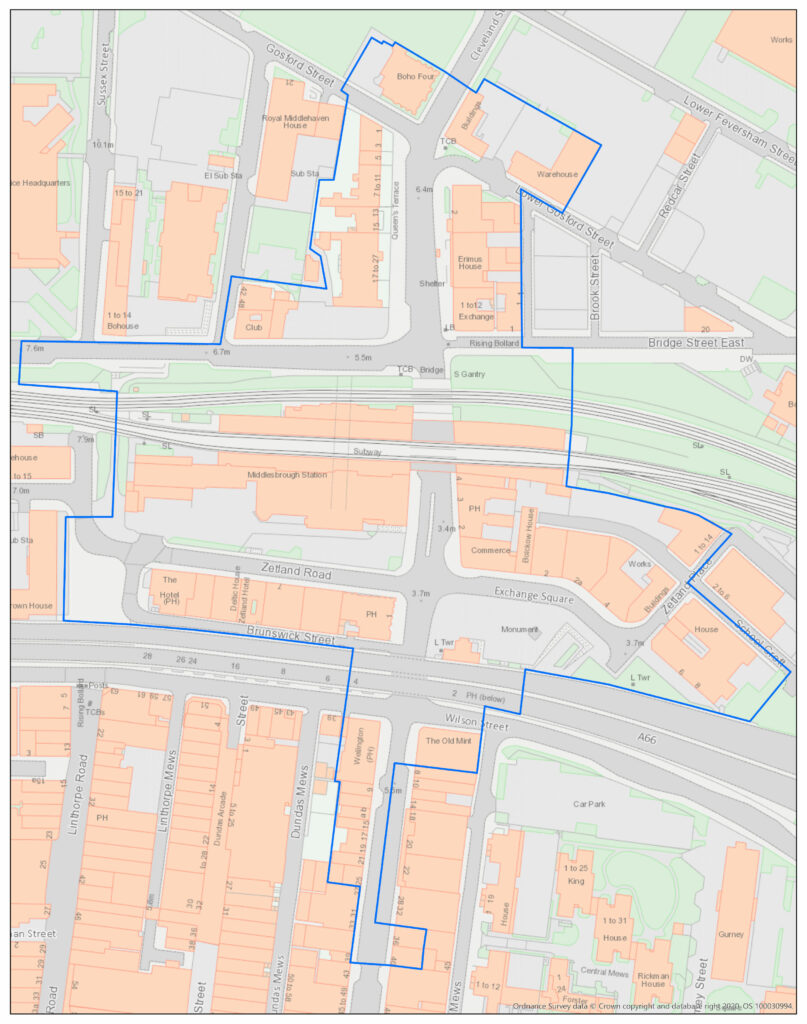Making Middlesbrough’s Historic Quarter central to the town’s ambitious regeneration programme
Middlesbrough Council has secured funding to breathe new life into its Historic Quarter through The High Streets Heritage Action Zones (HSHAZ) programme.
Funded by Historic England and Middlesbrough Council, the project will see our Historic Quarter become a High Street Heritage Action Zone, with a programme of improvements designed to reinvigorate the area and attract investment.
The programme of improvements will run from September 2020 to March 2024.
What are Heritage Action Zones?
The programme is a national project aiming to transform historic high streets and make them fit for the future.
Historic England is working with local people and partners across 69 High Streets in England, to help breathe new life into high streets that are rich in heritage. The multi-million pound High Street Heritage Action Zones scheme will be work across each of the selected High Streets, working with key partners to find new ways to champion and revive historic high streets.
This will aim to help with the recovery of local high streets from regenerating historic buildings to helping to engage local communities through art and cultural projects. A Cultural Programme will take place in conjunction with the main High Streets Heritage Action Zones scheme. Working with local communities, cultural organisations and artists, this will celebrate what is unique about each place.
Where is this?

The Middlesbrough High Street Heritage Action Zone boundary starts north of Albert Bridge around Gibson House and Plenary House on Cleveland Street. It includes all buildings on either side of Queens Square.
It goes west around Middlesbrough Railway Station then east down Brunswick Street. It also goes east around Middlesbrough Railway Station down to Zetland Place and around Teesside Archives, and through to Exchange Square.
From Brunswick Street and Exchange Square, the boundary runs south through Wilson Street to include the former Slam building, and through Albert Road from buildings 5-25 to the west, and 6 and 34-40 to the east of Albert Road.
What will be done?
A package of interventions will be delivered, which include:
- Property improvement grants to bring eligible buildings back into use.
- Upgrading Zetland Road and Exchange Square public spaces.
- Community activities where people can learn about the area’s heritage, work together and learn new skills.
- A cultural programme where local communities and cultural organisations can celebrate the area, and commission artists/creatives to make it a more attractive, engaging and vibrant place.
By restoring buildings, improving public areas and involving local people in the project, we will ensure this key part of Middlesbrough’s history can survive – and thrive – well into the future.
Why?
Middlesbrough’s Historic Quarter was the commercial centre of the town’s manufacturing and trade boom in the second half of the 19th century. The handsome Victorian townscape was made up of financial institutions: chambers of commerce, business clubs and banks. Many of the buildings in the area are of architectural and historical significance with around half of them listed.
However, many of these historic buildings have been empty for a long time and their poor appearance is making the area look tired and run down. The public spaces have also suffered from under-investment. The Historic Quarter is on the main route from the railway station to the town centre but currently there is little to inspire a pleasant walk between the two.
How the Middlesbrough High Street Heritage Action Zone will help
Coupled with current regeneration at the railway station and the area’s public spaces, the reuse of key historic buildings for housing and commercial businesses will make the route from the station to the town centre much more attractive. The improvement in perceptions in this area will be important to achieving Middlesbrough’s aspiration to become the destination of choice for the Tees Valley.
